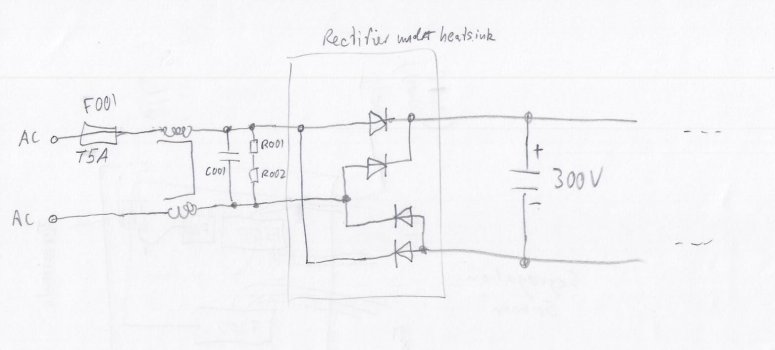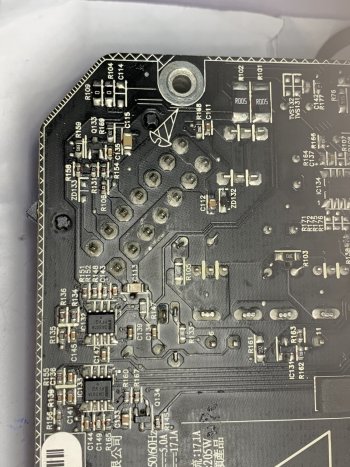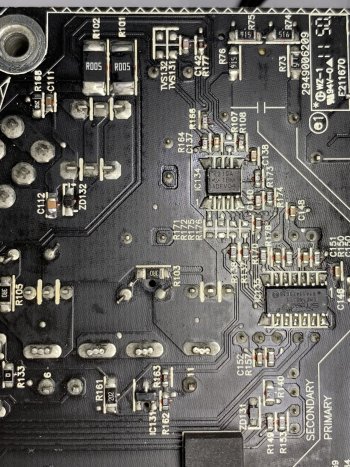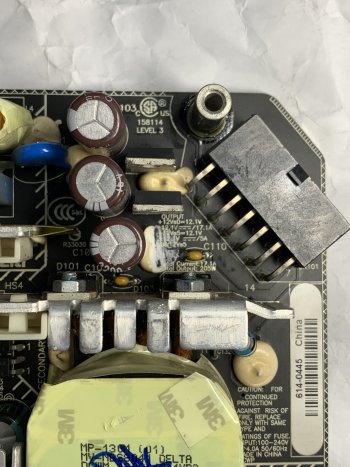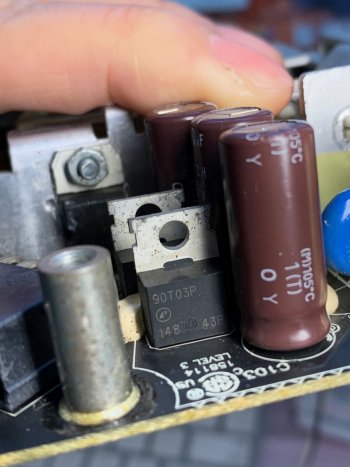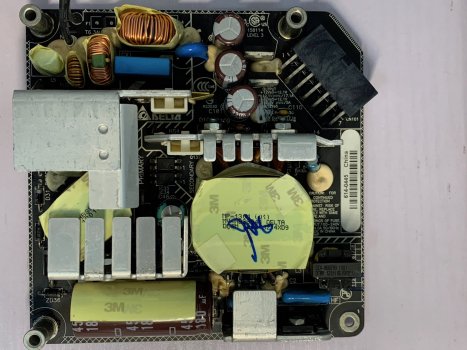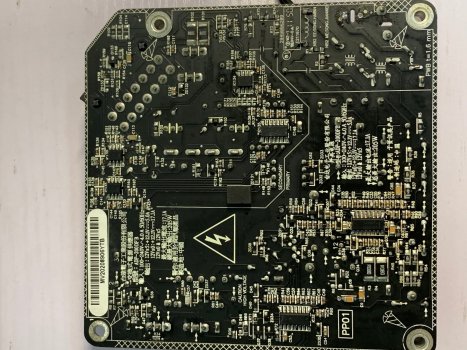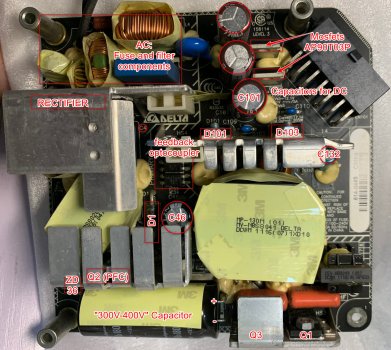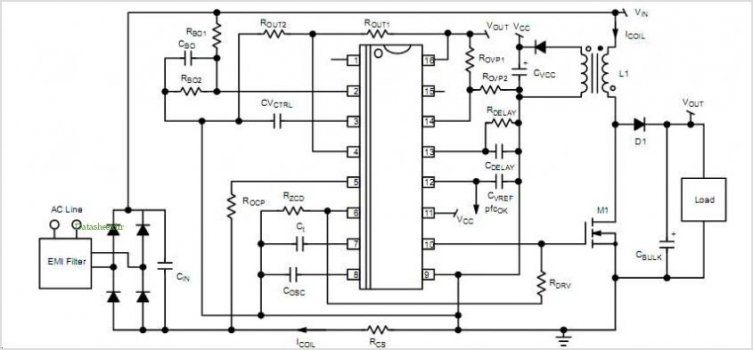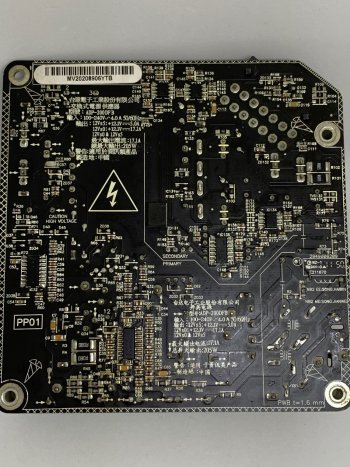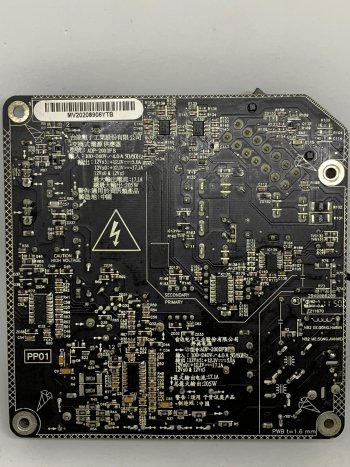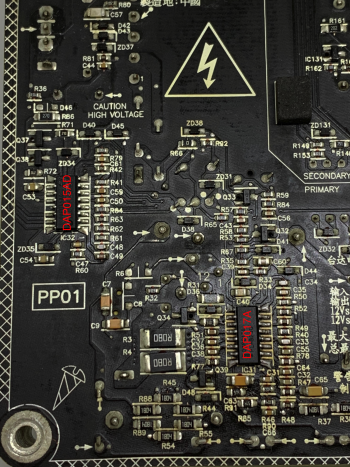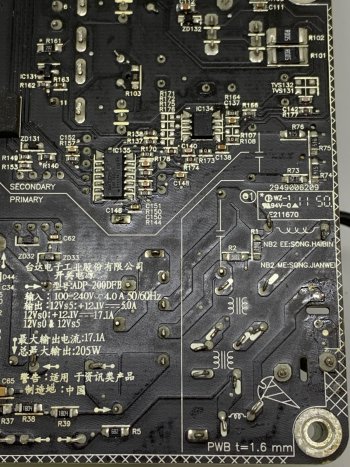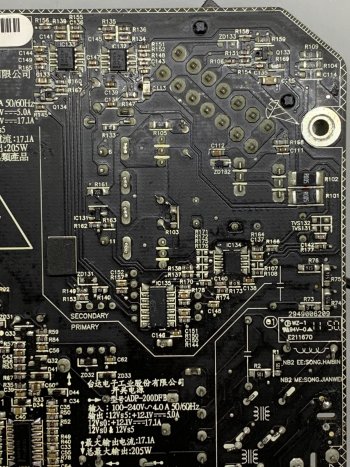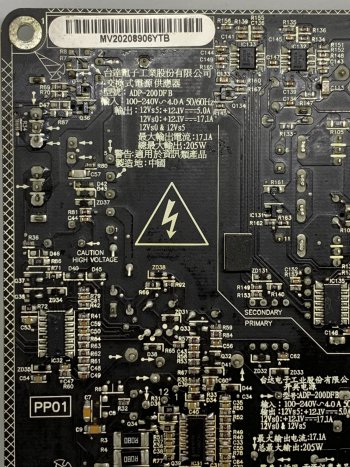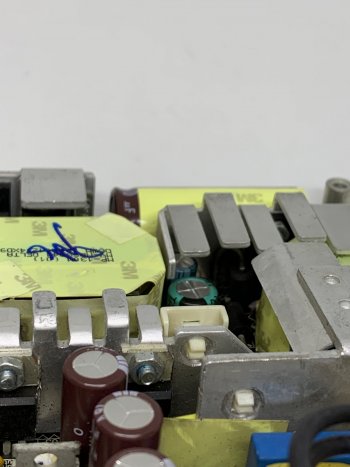I was stupid enough to accidentally touched the PSU [ACBEL Model OT8043 PSU. (Apple P/N: 614-0444)] with the CPU heatsink during a logic board removal for an iMac 21.5 2010 and heard a pop sound with some sparks and is now dead [PSU was plugged into the logic board during removal and logic board is still fine when tested in a different machine]
This has left some blackened burnt evidence near the electric shock logo [at C001] as shown in the below picture. (I think that's approximately where the heatsink touched it)


I have very limited knowledge of electronics and circuit. With that, I used multi-meter and found that the fuse F001 is blown. C001 is not shorted. That's all I know at this point. The IC on the right near the middle of the below picture is NCP1605G and the one on the bottom middle is L6599AD.
What would be my next step in terms of further troubleshooting this? Do you think C001 is burnt? Should I just try to replace the fuse and plug it in again and see what happen?
I am attaching a few more pictures of the PSU. Greatly appreciate any kind of help.



This has left some blackened burnt evidence near the electric shock logo [at C001] as shown in the below picture. (I think that's approximately where the heatsink touched it)
I have very limited knowledge of electronics and circuit. With that, I used multi-meter and found that the fuse F001 is blown. C001 is not shorted. That's all I know at this point. The IC on the right near the middle of the below picture is NCP1605G and the one on the bottom middle is L6599AD.
What would be my next step in terms of further troubleshooting this? Do you think C001 is burnt? Should I just try to replace the fuse and plug it in again and see what happen?
I am attaching a few more pictures of the PSU. Greatly appreciate any kind of help.
Last edited:


